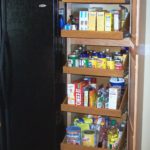New Trends and Developments in Architecture
Just like fashion and interior design, architecture is also governed by trends and developments that determine not only the way a building looks, but also the building technologies and the installation used during construction. Here are a few of the latest trends:
- Sustainability – one of the latest and most important trends is the movement towards sustainable solutions. Double or triple-paned windows are used to reduce energy losses and alternative energy sources such as solar panels are used to supply buildings with green energy, to mention just two of the most common sustainable solutions,
- Minimalist styles – natural colors design solutions that promote functionality are very popular nowadays, for residential buildings and office buildings alike,
- Natural materials – organic designs that use natural materials such as stone and wood are more and more in demand,
- Modular buildings – also called prefabricated buildings, modular constructions are becoming increasingly popular due to the shortened construction times and the aesthetically pleasing and highly functional outcomes,

- Outdoor living – in the past, houses used to incorporate all the rooms. One of the most recent developments in architecture nowadays is to move rooms that fulfil certain functions such as the kitchen to outdoor areas. Outdoor living rooms are also becoming more and more popular and in regions that get year around warm weather, having an outdoor bedroom is no longer uncommon.
Just as the trends for the building structure have changed, so too for the interior of your home. There are many new technologies within the home that make for a safe environment, allowing you to turn lights on with the touch of your phone, have your blinds opened and drawn with a touch and so much more. There are many new designs in kitchen and bath cabinetry with a more modern feel. Have a look at some of the newer conveniences of shelves that slide offered by Denver retailers if you are looking to upgrade on a tighter budget.





